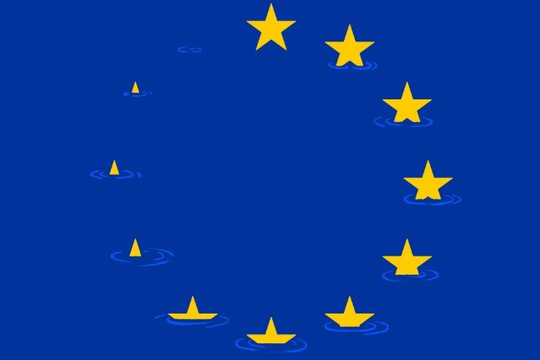Pic.: NYT
Across Europe, policymakers are converging on the same strategy, hoping to kill two birds with one stone, ‘The New York Times’ notes. On the one hand, increased military spending would make Europe safe from Russia and independent from America, at last securing its superpower status. On the other hand, it would revive Europe’s ailing industrial sector, under pressure from Chinese competitors and rising energy costs. Pumping money into the military, so the argument goes, is the way to fight the twin crises of geopolitical vulnerability and economic malaise.
These hopes are likely to prove delusive. Europe’s militarization push, suffering problems of both scale and efficiency, is unlikely to work on its own terms. But it carries a bigger danger than failure. By focusing on defense at the expense of all else, it risks taking the European Union not forward but backward. Rather than a major advance, breakneck rearmament could well amount to a historic mistake.
Europe’s new approach is usually given an older name: military Keynesianism. Originally, the concept referred to the tendency of midcentury governments to counteract economic downturns through increases in military spending — a combination supposedly first pioneered by the Nazis in the 1930s, then globalized by the Americans in the 1940s.
Yet it is far from clear whether Europe’s current efforts warrant such a description. For one, the continent is simply undergoing a return to military spending levels before 1989. At its peak in the 1960s, for instance, German military expenditure reached just under 5 percent of gross domestic product; Chancellor Friedrich Merz’s target, announced last week, is 3.5 percent. Such a restoration hardly qualifies as a great leap forward — certainly not matching the concept of the “Zeitenwende,” or “turning point,” that has been used to describe the change in approach.
The public benefits of the strategy — the Keynesianism part — remain equally unclear. Though Germany has slightly eased its debt rules, European policymakers remain reluctant to run up budget deficits. More money for the military will strain already tight budgets, taking away from social programs, infrastructural development and public utilities. Instead of military Keynesianism, a better comparison for Europe’s defense bonanza is the Reaganism of the 1980s, in which increased military spending and social retrenchment went hand in hand.
This, after all, is the logic of the Belgian officials in favor of turning the Audi factory into a weapons supplier. The plan’s chief advocate, the defense minister Theo Francken, has claimed that a state seeking to reduce its deficit and increase military budgets at the same time must draw down spending on welfare. “Social Security is too fat,” he has said. “Taking a few billion away from a budget of 200 billion is not inhuman, is it?” Given how widespread social discontent has fed a rising far right and threatened European cohesion, the view is shortsighted at best.
There are more problems with the remilitarization push. For one, many former industrial sectors will acquire a vested interest in warmaking abroad — hardly as reliable a source of profit as consumers buying cars. And more money for the military doesn’t necessarily mean better results, either. As the economist Adam Tooze notes, Europeans collectively lavish ample sums on their “zombie armies” and receive strikingly little in return, both in terms of manpower and material. No European company, for example, ranks in the top 10 defense companies by turnover.
Then there is the quintessentially European problem with coordination. With tanks and hardware already expensive, the costs of continental rearmament will be multiplied by the union’s decentralized decision-making, in which nations separately vie for contracts. Glimpses of such inefficiency are visible in the stalling efforts at shell production for the war in Ukraine. On top of this muddle, the first payouts of Europe’s splurge are likely to go to American producers while European factories get up and running. In a telling irony, the initial beneficiaries of the potlatch will be not European but American.
On its current course, Europe is headed for neither military Keynesianism with a social dividend nor a defense strategy suitable for an aspiring superpower. Rather, it risks getting the worst of both worlds: a meager economic recovery without long-term prospects for growth, and sumptuous payouts to a defense sector that would not allow Europe to match its peers.
read more in our Telegram-channel https://t.me/The_International_Affairs

 12:37 03.07.2025 •
12:37 03.07.2025 •























